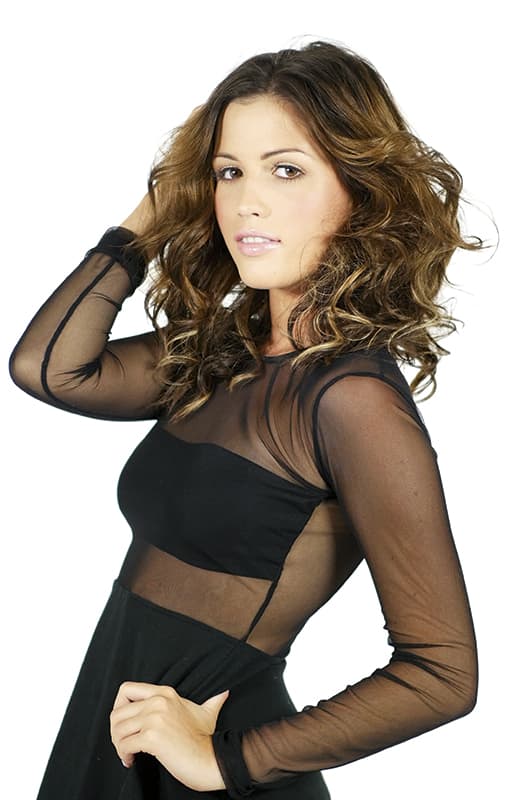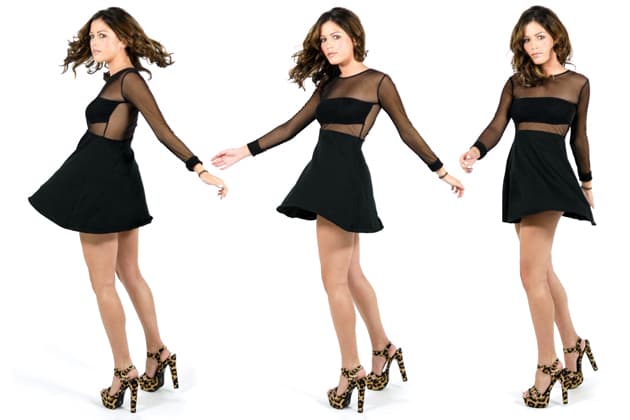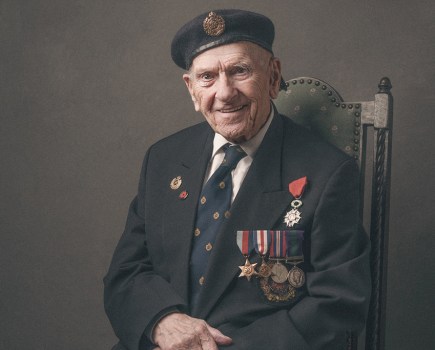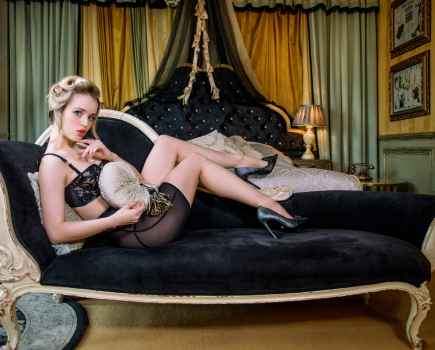
I’m pretty comfortable shooting products and people in studio and on location, but I’m rarely involved in video photography. My primary concern was to achieve a level of continuous lighting to capture movement in a way I’m used to with studio electronic flash. This meant using a shutter speed sufficient to freeze movement, and an ISO setting low enough to ensure no intrusive colour noise.
I used two daylight-balanced Photon Beard Highlight lamps, which gave me a reading of 1,500Lx at 3m. Sufficiently bright and comfortably cool-operating compared to tungsten, they lit a standard white Colorama background surrounded by four polystyrene reflectors.
This gave me even illumination over a larger area than usual for full-length fashion photography. The set was large enough to direct our model through step, walk and turn movements, as well as standard poses.
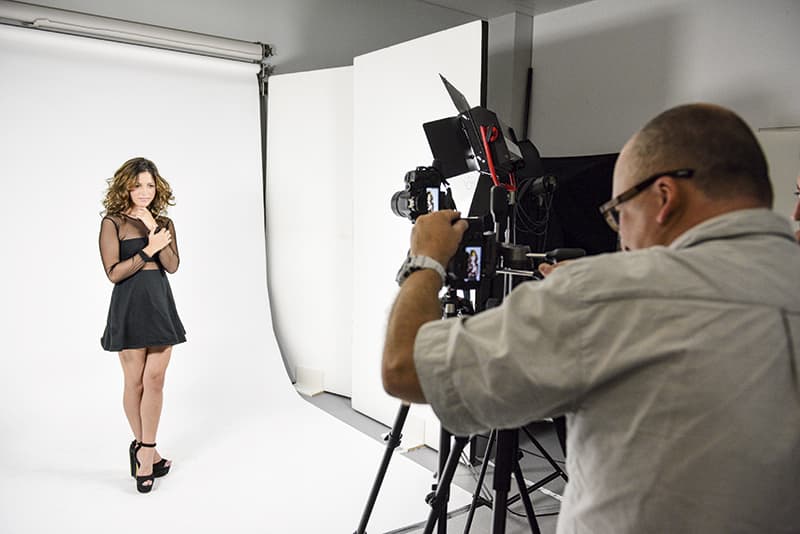
One major difference between shooting video and stills in the studio is the need to use continous lighting rather than flash
There was a general buzz of excitement in the studio, as we were well aware that we were among the first editorial teams anywhere to attempt shooting a cover taking still images from 4K video footage. With the Lumix GH4 recording video, I was able to walk away from the camera to observe and direct our model from different angles, trying to predict how the flow of movement from one pose to another would break down into still frames. Each 2-3min video recording seemed much more concentrated and frenetic than a series of still frames in a standard shoot, as each turn and movement was directed to minute degrees.
After reviewing the first takes and extracting a number of single images, it was obvious how perfectly selective we could be, with each pose divided into many segments. The decisive moment and perfect look definitively captured, all we had to do was search for it in the editing software. The quality of the 8-million-pixel still images was impressive and even when the model’s movement was too fast for the shutter to freeze, the images had a lovely edgy editorial feel to them. My feeling is that a shorter shooting time for each perfect shot is now a real possibility, as long as you don’t generate so much material that editing time negates time saved in shooting.
Shooting 4K video studio portraits: conclusion
As a jobbing photographer, I wouldn’t attempt to shoot 4K video studio portraits regularly in this way without an assistant editing the material in real-time. This process is time-consuming and requires a level of competence in video editing software that is not a part of most photographers’ skill set. Where this approach would be most useful is recording an event or moment in time where you’re not going to get a second chance, such as wedding and news photography.
In a situation where you have a very brief sitting arranged, for example, even the shortest engagement with your subject will result in many usable still images. Inevitably, 8-million-pixel files shot at ISO 1600 are not going to satisfy all current requirements, but the next-generation 8K and beyond are bound to influence the way all types of still images are captured in the future.
